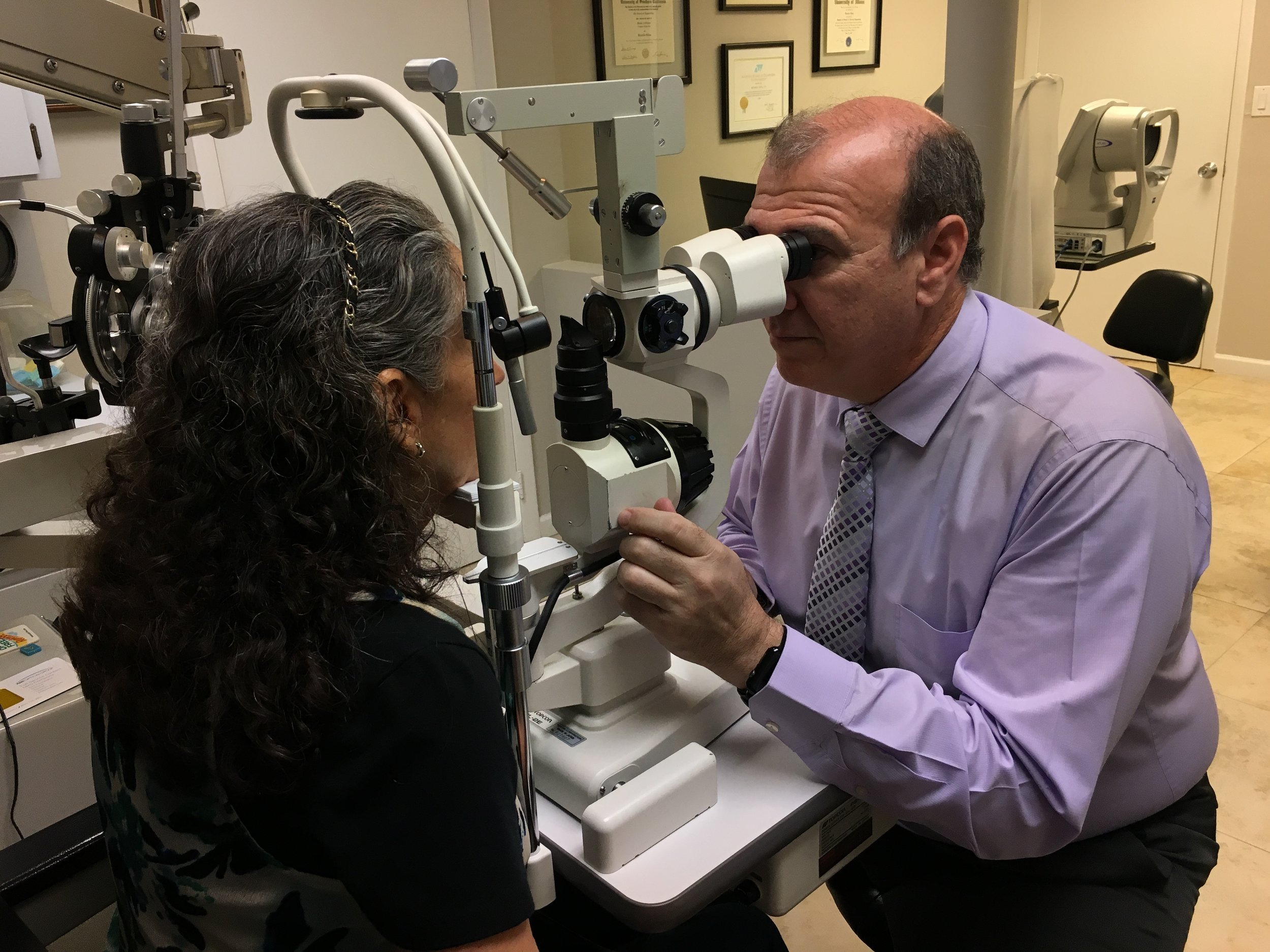Recognizing the Comprehensive Duty of an Eye Doctor in Modern Eye Treatment
With advancements in modern technology and an increasing emphasis on precautionary care, eye doctors are integral in diagnosing and managing chronic eye problems, while additionally engaging in early disease detection. Just how do these obligations converge with their role in advertising total eye health, and what does this mean for individual end results in a collective medical care setting?
Expanded Range of Practice
In recent times, the duty of optometrists has evolved considerably, with several specialists currently embracing a broadened range of technique that extends beyond traditional eye assessments. This evolution reflects the growing acknowledgment of eye doctors as primary doctor in the field of eye treatment. Their obligations currently encompass a variety of solutions, consisting of suggesting medicines for ocular problems, handling chronic eye conditions, and performing minor operations. This shift has been driven by innovations in optometric education, enhanced clinical training, and the enhancing requirement for extensive eye care solutions, particularly in underserved areas.
Additionally, optometrists are now extra associated with joint care, functioning closely with eye doctors, medical care medical professionals, and various other health care experts to make sure holistic patient treatment. This interprofessional partnership is crucial in taking care of complex cases that call for a multidisciplinary strategy. Furthermore, eye doctors are playing a crucial role in public health campaigns, such as vision testings and eye wellness education, aimed at boosting area health end results.
The increased range of method for eye doctors not just enhances their capability to give comprehensive treatment however additionally addresses the expanding need for efficient and obtainable eye treatment services, adding to total medical care improvements.
Very Early Illness Discovery
Very early discovery of eye illness is progressively coming to be a centerpiece in the expanded duty of optometrists. As key eye care companies, optometrists are uniquely placed to identify early signs of ocular problems such as glaucoma, macular deterioration, diabetic person retinopathy, and cataracts. This essential function is crucial, as very early medical diagnosis can dramatically improve the administration and prognosis of these problems, potentially stopping vision loss and boosting client end results.
Optometrists use thorough eye evaluations to find subtle modifications in vision and eye health and wellness. These exams typically include assessments of visual acuity, intraocular pressure, and retinal health. The ability to recognize early signs of systemic health and wellness problems, such as high blood pressure and diabetic issues, with eye indicators better emphasizes the value of normal eye examinations. Early intervention is not just advantageous in preserving vision but additionally in lowering medical care expenses connected with innovative condition treatments.
Additionally, optometrists play an essential function in person education and learning, emphasizing the relevance of routine eye examinations as component of overall health and wellness maintenance. By promoting a proactive strategy to eye care, eye doctors contribute substantially to public health and wellness, ensuring illness are caught and handled effectively before they can advance.
Advanced Diagnostic Techniques
Advanced analysis techniques have changed the method of optometry, making it possible for experts to discover and monitor ocular conditions with unprecedented accuracy. These innovations have actually changed the optometric landscape, permitting much more innovative analysis and intervention techniques. Technologies such as optical comprehensibility tomography (OCT) supply high-resolution, cross-sectional pictures of the retina, assisting in very early discovery of conditions like glaucoma and macular degeneration. This non-invasive method has actually become important in modern-day optometry, offering comprehensive insights right into retinal layers.
Another important advancement is digital retinal imaging, which captures comprehensive views of the retina using high-def cams. Resources This modern technology is crucial in identifying adjustments in retinal framework with time, therefore assisting in the management of conditions like diabetic person retinopathy. Aesthetic area testing, enhanced by computer-aided systems, allows for precise mapping of an individual's field of view, crucial in diagnosing and tracking glaucoma development.
Corneal topography, an additional remarkable diagnostic tool, produces in-depth maps of the cornea's surface. This is specifically beneficial in suitable call lenses and intending refractive surgical procedure. These sophisticated diagnostic techniques jointly allow optometrists to give positive, targeted treatment, making sure much better patient end results and strengthening their pivotal duty in eye health and wellness management.
Taking Care Of Chronic Eye Problems
Handling persistent eye conditions is a keystone of optometric care that calls for a detailed understanding of various eye diseases and their lasting implications. Optometrists play a crucial function in tracking, handling, and diagnosing problems such as glaucoma, diabetic retinopathy, and age-related macular deterioration. These conditions, if left neglected, can lead to considerable aesthetic problems or blindness, highlighting the essential significance of recurring treatment and monitoring.
Optometrists utilize a variety of diagnostic devices, consisting of optical coherence tomography (OCT), visual area testing, and fundus digital photography, to assess the development of these chronic problems. By very closely keeping an eye on changes in ocular wellness, eye doctors can adjust treatment plans to alleviate condition progression. This may involve recommending medicines, advising way of living modifications, or coordinating with ophthalmologists for medical treatments when needed.

Function in Preventive Care
Precautionary treatment is a fundamental aspect of optometry that concentrates on keeping eye health and avoiding the beginning of ocular conditions. Optometrists play an important role in very early detection and prevention, using regular eye evaluations to determine risk factors and refined changes in ocular health. Eye Doctor. These assessments are not just concerning vision improvement yet encompass a comprehensive analysis of eye features and frameworks, making it possible for the recognition of problems such as glaucoma, cataracts, and macular deterioration at a beginning
In addition pop over to this site to diagnostics, eye doctors enlighten individuals on lifestyle choices that promote eye wellness, such as appropriate nutrition, UV protection, and the significance of routine eye examinations. They encourage on the correct usage of digital gadgets to stop electronic eye pressure, a growing problem in the digital age. Optometrists also supply guidance on safety eyeglasses for occupational and leisure activities, mitigating the threat of injury.
Preventive eye treatment includes systemic health and wellness problems that manifest in the eyes, such as diabetes and high blood pressure. By working together with various other medical care professionals, optometrists add to all natural client care, highlighting the interconnectedness of systemic and ocular health. This aggressive technique is crucial in safeguarding visual skill and overall health.
Verdict
Optometrists now inhabit a pivotal function in modern-day eye care, characterized by an increased scope that consists of detecting and managing persistent eye conditions, prescribing drugs, and performing small operations (Eye Doctor). Their competence in early disease detection is improved by innovative diagnostic methods such as optical comprehensibility tomography and electronic retinal imaging. By highlighting preventive care and person education and learning, optometrists add considerably to total his comment is here eye wellness, working together with various other health care experts to make certain thorough and effective client outcomes

In addition to diagnostics, optometrists enlighten individuals on lifestyle selections that advertise eye wellness, such as proper nutrition, UV security, and the relevance of routine eye exams.Preventive eye treatment prolongs to systemic health and wellness concerns that manifest in the eyes, such as diabetic issues and high blood pressure.Optometrists currently occupy an essential function in modern-day eye treatment, characterized by an expanded scope that consists of detecting and taking care of chronic eye problems, prescribing medications, and executing small medical treatments.